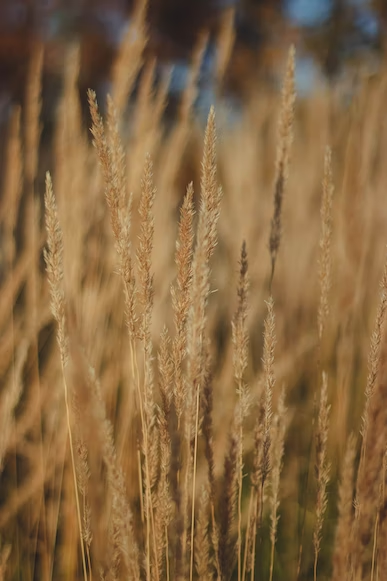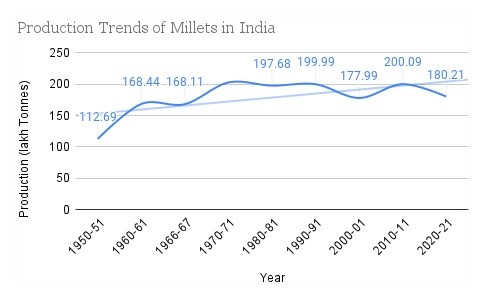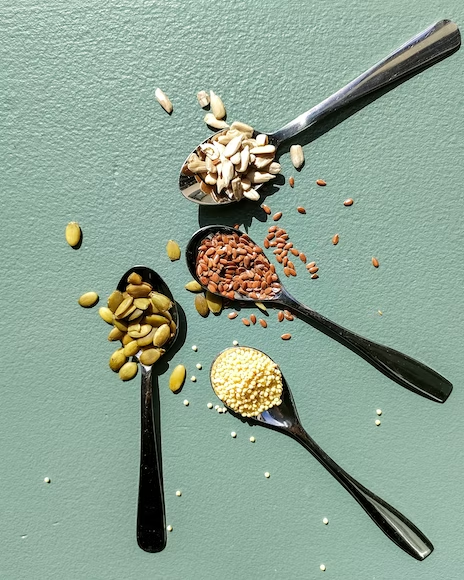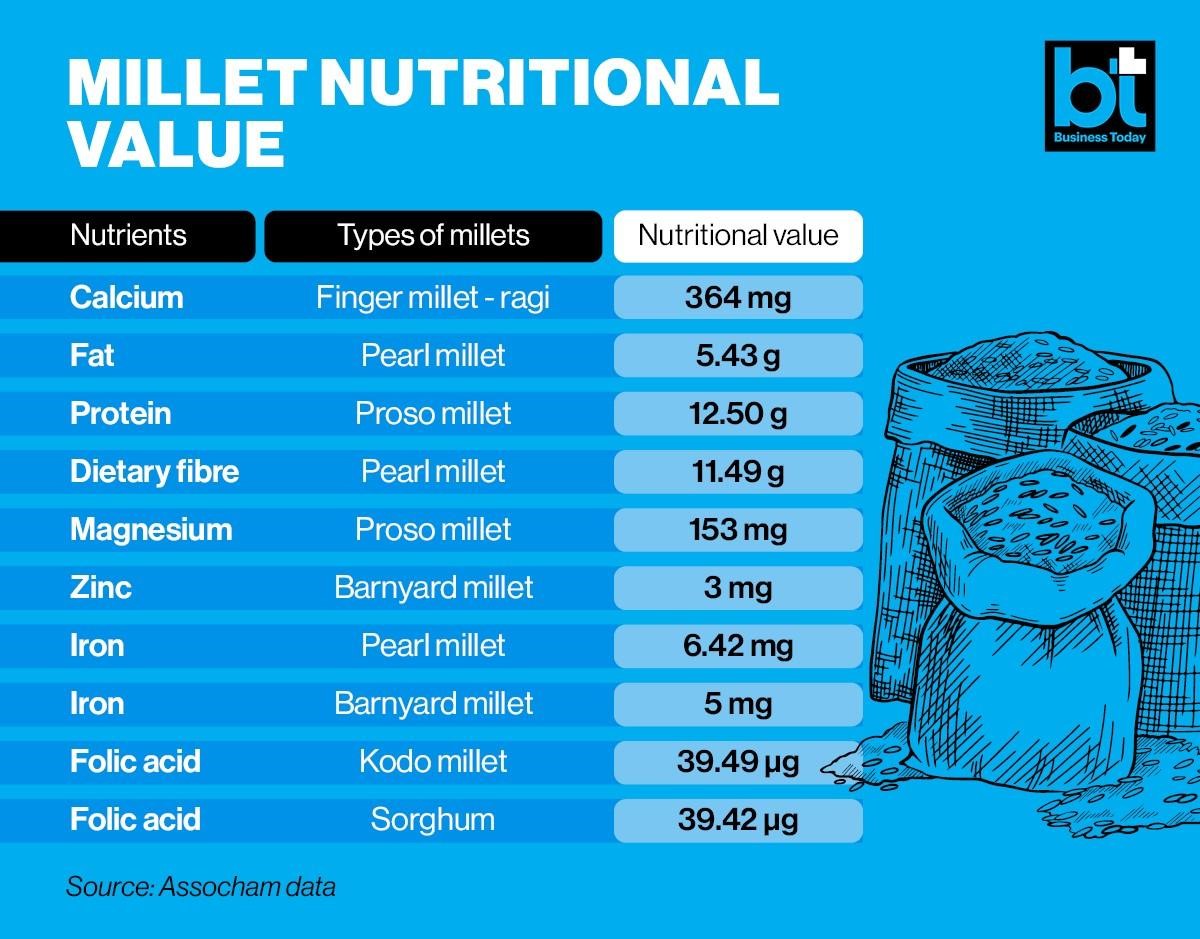
The United Nations announced the year 2023 as the International Year of the Millet, following a recommendation by the Indian government, which aims to become a global hub for millet. The declaration is necessary because Indian food systems face challenges in feeding an ever-growing global population, low farmer incomes, rising obesity levels, and reduced yield due to climate change. Millets such as ragi, bajra, Kodo and sorghum offer various benefits in empowering smallholder farmers, achieving sustainable development, eliminating hunger, adapting to climate change, promoting biodiversity, and transforming agri-food systems.
Millet cultivation in India
Millets was consumed traditionally, but due to the push in Green Revolution in the 1960s, millets were almost overlooked. 1Before the Revolution, millet was 40 per cent of all cultivated grains, which dropped to about 20 per cent over the years. But have now joined the mainstream as the favoured foodgrain choice among health-conscious people. In India, millets are mainly a Kharif crop that requires less water and agricultural inputs than other grains. But farmers are still not enthused by the opportunity of replacing rice and wheat with nutri-cereals even though they need less time to grow these coarse food crops such as Jowar, Bajra, Ragi, Kodo and Kutki.
India is the world’s largest producer and fifth-largest exporter of millet. Most states in India grow one or more kinds of millet crop, such as Maharashtra, Karnataka, Rajasthan, Uttar Pradesh, Haryana, Gujarat, Madhya Pradesh, Tamil Nadu, and Telangana. According to an analysis by CEEW, interaction with farmers in Andhra Pradesh indicated that while they were aware of the resilience of millets, they were unsure about their market absorption.
Realizing the poor awareness of farmers and the disconnect between demand and supply, the Centre has promoted the International Year of Millet among farmers through hand-holding and creating domestic and international markets for millets. It will help to generate worldwide awareness about the important role of millet in sustainable agriculture and its benefits as a superfood.

Benefits of Millets
Millets are an ancient superfood that has garnered interest in the recent past. They can be helpful as-
Good for Health –
Millets can help tackle lifestyle problems and health challenges such as obesity, cardiovascular diseases, anaemia, calcium deficiency, diabetes, etc., as they are more nutritious than refined cereals. They have higher protein, fat and fibre content. They are gluten-free and non-allergenic. Millet has a low Glycemic Index and is rich in essential amino acids. Because of low GI, they are suitable for diabetic persons. They are also rich in micronutrients like iron, zinc, iodine, calcium, etc.
Good for Sustainable Agriculture –
Millet production facilitates a shift towards sustainable agriculture, diversifying crop cycles and avoiding mono-cropping systems by reducing synthetic fertilizers and pesticides. Millets also have low carbon and water footprint (rice plants need at least three times more water to grow than millets).

Suitable for the Environment –
Millets have low water requirements and a short growing season. Millets can grow in regions with less than 50 cm of annual rainfall. They can be grown on dry land using farmyard manures, thus reducing the dependency on synthetic fertilizers.
Good for nutritional security –
Millets can provide nutritional security and protect against nutritional deficiency, mainly in children and women. Its high iron content can fight the high prevalence of anaemia in Indian women of reproductive age and infants.

How can India push the adoption of millet?
India produces more than 2170 lakh tonnes of millet, 80 per cent of Asia’s and 20 per cent of global production. As per the government’s powerful strategy to encourage millet. Relentless efforts are needed to mainstream millet farming to improve the ecological balance and the health system of the population, using the ‘super grain’ as health foods. Farmers should be educated about millet-growing techniques and their processability. Incentives should be provided to people growing and procuring nutri-cereals, besides improving domestic consumption by creating consumer awareness.
FAQS
What are the challenges of millet production in India?
Mono-cropping and lack of awareness about the nutritional value of millets have led to restricted adoption of millets. Also, limited distribution and lack of market knowledge result in lower price realization and wastage.
Why is the government promoting millet production?
Promoting millet cultivation at a large scale will help secure farmers’ livelihoods and lives in the face of climate change. A comprehensive policy response that incentivizes farmers to build strong market linkages and encourages biodiversity is urgently needed.
Notes-
https://www.businesstoday.in/lifestyle/food/story/millets-and-the-journey-of-the-grain-in-indian-culinary-history-357250-2022-12-21